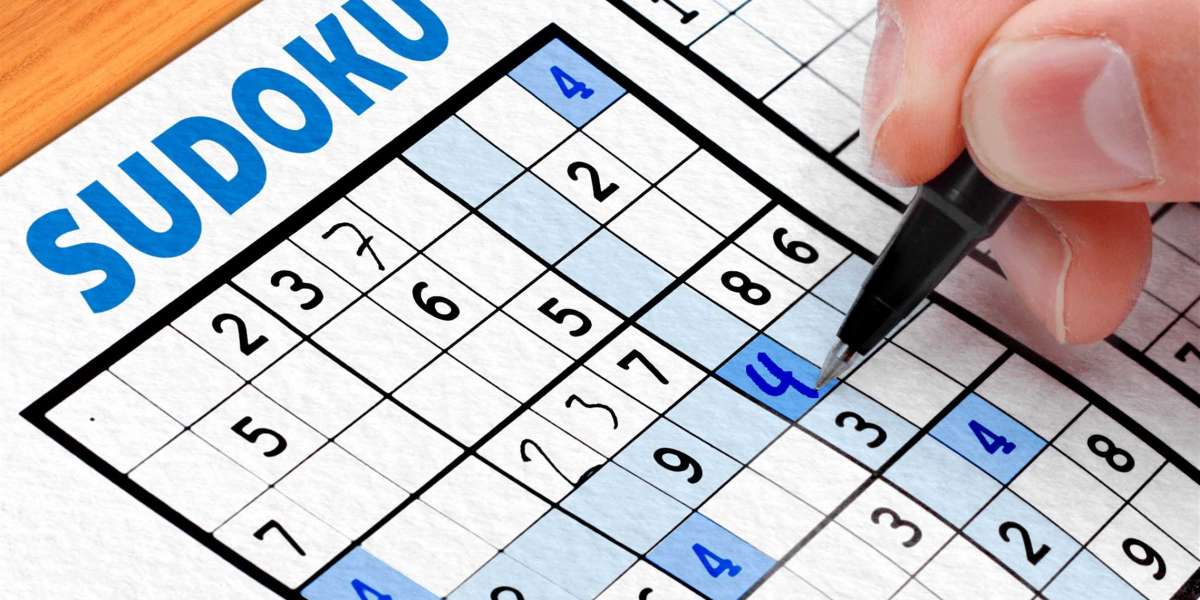You know that feeling when your brain is stuck on something for hours, and then suddenly, the solution appears so clearly you wonder how you didn’t see it before? That’s the very essence of Sudoku.
How I Discovered Sudoku
My first encounter with Sudoku wasn’t glamorous. It wasn’t in a bookshop or an app, but on the back page of a free newspaper. I was waiting for a bus, killing time, when my eyes landed on the neat little 9x9 grid filled with a few numbers here and there. The instructions seemed simple enough: fill in the missing numbers so that each row, column, and 3x3 box contains the digits 1 through 9 exactly once.
Easy, right? At least that’s what I thought.
Five minutes later, I was chewing the end of my pen, frustrated that I had already trapped myself in contradictions. The “simple” puzzle was mocking me. I folded the paper, stuffed it into my bag, and thought, “This game is ridiculous.” But, of course, I couldn’t let it go.
Why Sudoku Is So Addictive
I think what makes Sudoku so compelling is the balance between logic and patience. Unlike crosswords, there’s no trivia knowledge required—just pure reasoning. Every number you place either unlocks the path forward or corners you into a mistake.
For me, the charm lies in its rhythm. At first, the puzzle feels overwhelming, like a wall of emptiness. Then slowly, patterns emerge. A “2” here forces a “2” there. A “7” in this box means it can’t appear in that one. Bit by bit, the grid unfolds like a story.
And here’s the funny thing: sometimes, solving Sudoku feels less like solving and more like listening. The numbers almost “tell” you where they want to go—you just have to quiet your impatient brain and pay attention.
My Most Memorable Game
I’ll never forget one particular evening when I was stuck at an airport with a delayed flight. I had nothing but my phone, so I downloaded a Sudoku app just to pass the time.
The puzzle I chose was labeled “Expert.” Big mistake.
At first, I was making progress, filling in numbers confidently. Then I hit a wall. For nearly an hour, nothing worked. Every path I tried ended in contradictions. I was tempted to give up, but there’s something about an unsolved puzzle that haunts me.
So, I stared at that grid like it was some kind of riddle written in an ancient language. Finally, I noticed a subtle pattern in one of the 3x3 boxes: two possible places for a “6.” If I chose wrong, the whole puzzle would collapse. I hesitated, placed the number, and suddenly, it was like the entire grid opened up. The last 20 numbers fell into place in less than five minutes.
When I finished, I felt like I had just climbed a mountain. Sure, my flight was still delayed, but at least I had conquered something in the meantime.
The Frustrations Along the Way
Of course, not every Sudoku game ends with a victorious smile. Sometimes I make a careless mistake early on, and only discover it 20 minutes later when the whole grid refuses to work. There’s nothing quite as annoying as realizing you’ve put a “9” where a “7” should be, and everything you’ve built since is doomed.
There have been evenings when I’ve closed my notebook or app in a mix of annoyance and resignation, muttering to myself, “Never again.” But give it a few hours, and there I am, opening a new puzzle.
It’s almost like Sudoku has a way of teaching humility. No matter how clever you think you are, the grid will expose your impatience.
The Small Lessons Sudoku Teaches
Over time, I’ve come to realize that Sudoku isn’t just a puzzle—it’s a teacher in disguise. Here are a few lessons I’ve picked up along the way:
Patience matters more than speed. Rushing only leads to mistakes. Slowing down often solves the puzzle faster.
Details make the difference. Missing one possibility can block your progress for hours.
Every problem has a solution. Even the toughest-looking grid is solvable—you just need the right perspective.
Mistakes are part of the process. Sometimes you have to backtrack and start fresh, and that’s okay.
These lessons don’t just apply to Sudoku—they sneak into everyday life. When I’m facing a complicated problem at work or in relationships, I often think back to how the grid eventually makes sense if I keep trying.
My Little Tricks for Playing
If you’re someone who enjoys Sudoku but often gets stuck, here are a few of my personal tricks:
Use pencil (or the digital equivalent). Don’t be afraid to make notes and erase them later. Half of solving Sudoku is about exploring possibilities.
Look for “naked singles.” If a number can only fit in one spot in a row, column, or box, place it immediately.
Don’t guess too early. Guessing often leads to wasted time. Stick to logic as long as you can.
Take breaks. Sometimes the solution only appears after stepping away for a while.
I can’t tell you how many times I’ve stared at a puzzle, convinced it was unsolvable, only to return later and finish it in five minutes.
The Joy of Finishing
Nothing compares to the tiny rush of satisfaction that comes from completing a tough Sudoku puzzle. It’s not a loud, dramatic victory—it’s quiet, almost intimate. Just you, the grid, and a final number that clicks perfectly into place.
I think that’s why I keep coming back to it. It’s not about competing with others or showing off a high score. It’s about those private little victories that remind me I can handle challenges, even if they come one square at a time.
Closing Thoughts
At this point, Sudoku has become more than a pastime for me. It’s a ritual, a way to clear my head and focus. Sometimes it frustrates me, sometimes it delights me, but it always keeps me engaged.



